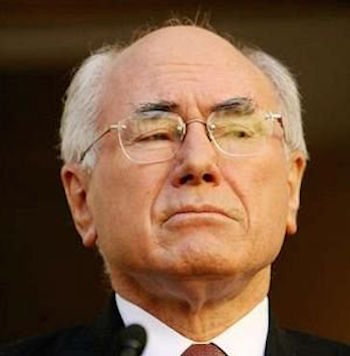TOP 10 IA STORIES OF 2011
The mainstream media went missing after the Fukushima nuclear power plant meltdown caused devastation to the people and land of Japan. Independent Australia followed the story all the way through, however, and this disturbing May story by Sandi Keane broke news about the true and shocking scale of the disaster weeks before the details were grudgingly admitted by the nuclear power company, Tepco, and the Japanese Government authorities.
#5: THE HORRIFYING CONSEQUENCES OF THE FUKUSHIMA MELTDOWN
EXCLUSIVE interview with Dr Helen Caldicott, who talks about the potential ramifications of the Fukushima meltdown, including the horrifying possibility of a hydrogen explosion, which is something the authorities aren't discussing.
By Sandi Keane| Environment Editor
If you’re a news junkie like me chasing stories outside Australia’s mainstream, you would have heard the news today about the meltdown in Reactor No. 1 at Fukushima. It should have sent a chill down your spine. It probably won’t. We get “meltdown” but unless we live in the immediate fallout area, we’ll probably just carry on in blissful ignorance. Here’s what I mean. I just tuned in to the 1pm ABC Radio National news. The lead story was Julie Gillard berating Tony Abbott for his negativity. That’s news? Or should I say new? That’s how most of us deal with disasters if they don’t affect us! Fukushima wasn’t news once we were sure no telltale glowing clouds were headed our way. Give us a disaster movie any day, especially horrors happening in other places. Who didn’t thrill to the 1979 adrenalin fix, The China Syndrome? What a rush that was — major meltdown right through the container into the earth – all the way to China! Whoooeeehhh!
The news coming from Japan today is no horror movie. It is very real and we may be in for a sequel – The Japan Syndrome. My reality check came after a very sobering interview today with Dr. Helen Caldicott who has given Independent Australia the inside story. To her, the real accident at Fukushima is just beginning.
Last week, engineers from Tokyo Electric Power Company (TEPCO) finally got into the No. 1 reactor with their water monitoring equipment. This is the first time they’ve seen the molten mass at the bottom of the reactor which, according to Dr. Caldicott, “could melt through the bottom of the containment vessel and onto the concrete floor if hasn’t already done so”. Up to now, TEPCO believed that there was enough water left in the core of the reactor to keep the fuel rods stable. The company isn’t denying the possibility of a molten pool of radioactive fuel burning a hole in the steel containment pressure vessel. What they aren’t saying, according to Dr. Caldicott, is that it could initiate a hydrogen explosion which would release massive amounts of radiation into the atmosphere.
Dr Caldicott says the same goes for No. 2 Reactor. Total meltdown. Radioactive lava has hit the concrete floor. And another leak. Workers have been pumping water into Reactors 1-3 but as fast as they do, the water is pouring out through the holes caused by the exposed, burning fuel rods. No-one seems to have a clue where it is going. Like the rest of the statistics, we’re talking “guestimates".
“They think No. 3 is also a meltdown but we don’t know how much,” said Dr. Caldicott.
TEPCO’s engineers haven’t gone in as yet so there’s no water monitoring. Interestingly, cooling pool No. 3 has no fuel in it.
Dr Caldicott mentions a massive explosion, which has almost certainly spread radiation widely into the surrounding areas:
“There was a massive explosion – maybe a nuclear critical mass explosion – which would explain how fuel rods containing plutonium were found one-and-a-half miles from the reactor. Witnesses reported a big explosion and dark smoke. The fallout testing in the USA is totally inadequate. The smoke from this explosion probably contained aerosolite plutonium, which could be blowing with the help of the westerly winds to the USA. In fact, plutonium has been found in areas in the west.”Fuel pool No. 4 also underwent a massive explosion. The building which is leaning could collapse. There is lot of fuel in fuel pool 4. They emptied the reactor and put all the spent fuel in the pool just before the earthquake occurred. It’s yet another complication. U.S. nuclear experts are urging the building of a concrete wall around the entire site. This would take years. But, in the meantime?
According to Dr Caldicott, the radiation recorded at Fukushima is many orders of magnitude higher than that recorded at Chernobyl.
Dr. Caldicott despairs of getting the message across about the medical catastrophe:
“Genetic mutations damage the very building blocks of life. There will be millions of cases of cancer.”She also reminds us that the winds in Japan, currently blowing from west to east, are about to change to south blowing radioactive fallout towards Tokyo and south of Japan. And this is the season for rain, which will bring the fall out down in quite concentrated amounts.
We thought Chernobyl was the hard lesson of the nuclear experiment. The lesson from Fukushima is yet to be played out. Helen Caldicott is right. The real accident is just beginning. TEPCO is in unchartered territory. Nuclear experts are predicting the scale of this catastrophe to skyrocket off the known emergency procedures charts. TEPCO has been telling us for months that the disaster has been contained. If you were living in Japan, who would you believe?
Helen Caldicott describes herself a pantheist – a worshipper of life rather than gods — something she shares with William Wordsworth and Frank Lloyd Wright whose artistic expression speaks to us of their love of the natural world. If you would like to find out more about Dr Caldicott, visit her website: http://www.helencaldicott.com, or read one of her books, Nuclear Power is Not the Answer (Publisher: The New Press (2006); ISBN: 978-1-59558-067-2, Melbourne University Press (2006): ISBN 0522 85251 3) or If You Love This Planet, which won the Academy Award for best documentary in 1982(W.W. Norton & Company (revised and updated 2009); ISBN: 978-0-393-33302-2).
[vimeo 10476248]









